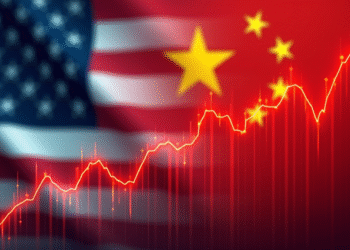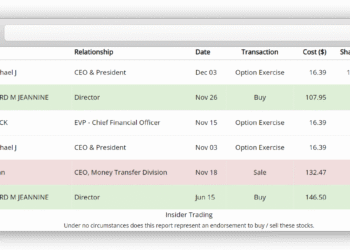The US dollar economic concerns have taken center stage as recent data casts a shadow over the greenback’s stability. Today, the dollar index slipped by 0.09%, reversing earlier gains fueled by promising comments from US Treasury Secretary Bessent. This decline follows a dismal April Dallas Fed manufacturing survey that reported a dramatic fall to a five-year low, raising alarms about potential economic stagnation. Additionally, tensions surrounding the US-China trade war are reigniting fears of prolonged impact on economic growth, especially as President Trump signals no incentives to lower tariffs without substantial gains from China. With US Treasury yields fluctuating and the European Central Bank (ECB) hinting at potential interest rate cuts, the dollar’s future may hinge on how these economic dynamics unfold in the coming weeks.
Rising apprehensions about the value of the US dollar are becoming increasingly pronounced, drawing attention to broader economic implications. A recent decline in the dollar index highlights investor unease, driven largely by disappointing results from key surveys on manufacturing performance, specifically the Dallas Fed report. This scenario is further complicated by ongoing uncertainties in international trade relationships, particularly with China, as tariffs remain a contentious issue. The fluctuating yields on US Treasury bonds also contribute to this precarious economic landscape. Coupled with potential shifts in ECB monetary policy, these factors collectively raise vital questions about the dollar’s resilience in a turbulent global economic climate.
The Impact of Economic Concerns on the Dollar Index
The dollar index has experienced a decline due to looming economic concerns that have unsettled investors. Recently, the April Dallas Fed manufacturing survey reported a general business activity index that plummeted to its lowest in five years. This downturn signifies a more extensive economic malaise that could deter upward momentum for the dollar, particularly in light of the ongoing US-China trade war. Given the dollar’s role as a global currency, any signs of economic weakness can lead to reduced investor confidence, pushing them towards safer assets.
Moreover, the prospects for the US dollar remain fragile as global economic conditions fluctuate and market participants react to the latest data. As the Dallas Fed points out, the shrinking manufacturing sector may trigger concerns about broader economic implications, which in turn could influence US Treasury yields. A favorable indicator for the dollar is often reflected in higher T-note yields, which seem to absorb some selling pressure when the economy shows signs of stagnation.
Frequently Asked Questions
What are the current US Dollar Economic Concerns stemming from the latest Dallas Fed manufacturing survey?
Recent economic concerns regarding the US dollar have been highlighted by the April Dallas Fed manufacturing survey, which dropped to a five-year low. This decline signals potential weakening in manufacturing performance and raises worries about the overall health of the US economy, contributing to doubts about the dollar’s strength.
How does the US-China trade war affect US Dollar Economic Concerns?
The ongoing US-China trade war significantly contributes to US dollar economic concerns. As tariffs remain high with no immediate sign of reduction, there is mounting pressure on US economic growth. This uncertainty hinders investor confidence in the dollar, as prolonged tariffs could negatively impact trade dynamics and economic stability.
How are US Treasury yields influencing US Dollar Economic Concerns?
US Treasury yields play a crucial role in shaping US dollar economic concerns. When yields rise, it typically supports the dollar by attracting foreign investment. However, volatility in yields due to economic data, such as the dismal Dallas Fed survey results, can lead to fluctuations in dollar value, raising concerns about its long-term stability.
What implications do ECB interest rates have on US Dollar Economic Concerns?
Changes in ECB interest rates have direct implications for US dollar economic concerns. If the ECB signals potential rate cuts due to economic weakness in Europe, it can lead to a weaker euro against the dollar. This dynamic creates competitive pressure on the dollar, affecting its value and the broader economic outlook.
What is the dollar index and how does it relate to US Dollar Economic Concerns?
The dollar index (DXY) measures the value of the US dollar against a basket of foreign currencies. It is closely linked to US dollar economic concerns, as fluctuations in the index often reflect shifts in market confidence, influenced by economic data such as the Dallas Fed survey and geopolitical events like the US-China trade war.
| Key Point | Details |
|---|---|
| Dollar Index Performance | Dollar index (DXY) down by -0.09%, lost gains due to economic concerns. |
| Manufacturing Survey | April Dallas Fed index fell to a 5-year low of -35.8, worse than expected. |
| US-China Trade Tensions | Tariffs will not be reduced unless substantial concessions are made by China. |
| Interest Rate Speculation | Markets price in an 8% chance of a -25 bp rate cut from FOMC meeting. |
| Euro Performance | EUR/USD up +0.11% as euro rebounded on dollar weakening. |
| Japanese Yen Performance | USD/JPY down -0.60% as yen gains moderately; safe-haven demand diminished. |
| Precious Metals Trends | Gold prices rise while silver shows less demand; mixed signals from geopolitical risks. |
Summary
US Dollar Economic Concerns are shaping the monetary landscape, highlighting the ongoing challenges faced by the currency. Amid deteriorating manufacturing activity and heightened geopolitical risks, the dollar’s reversal from early gains reflects market sensitivity to economic indicators and international trade relations. As analysts watch forecasts for interest rate cuts and overall economic health, the future stability of the US dollar remains uncertain amidst these concerns.













